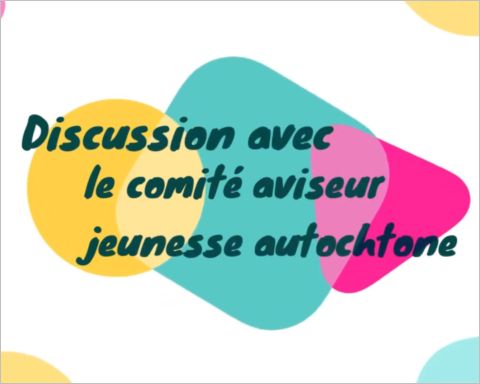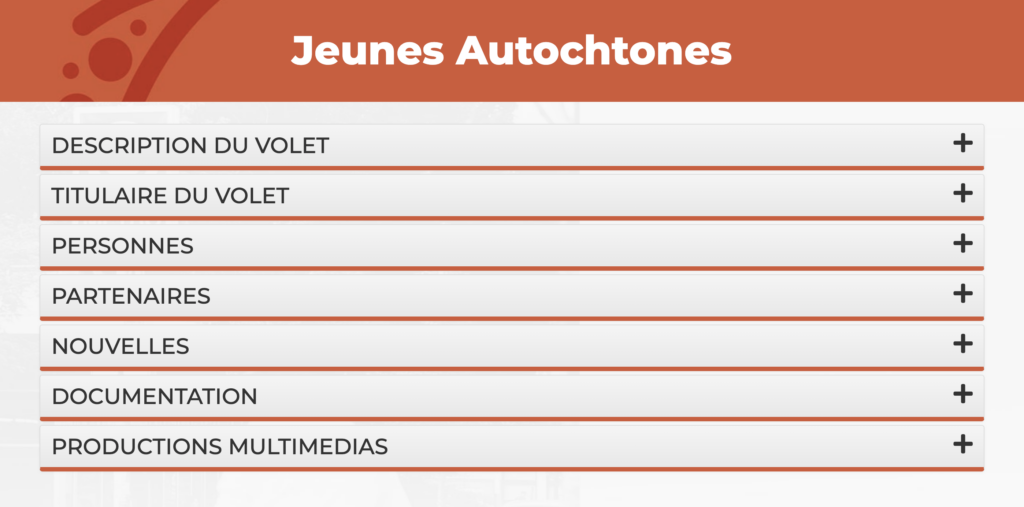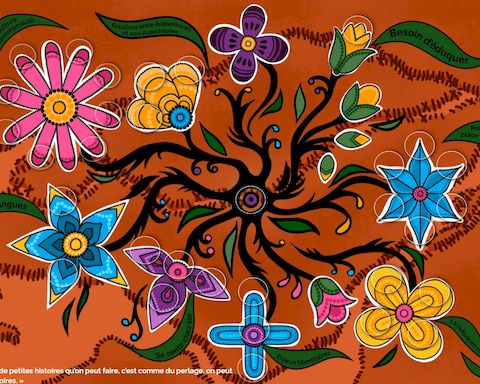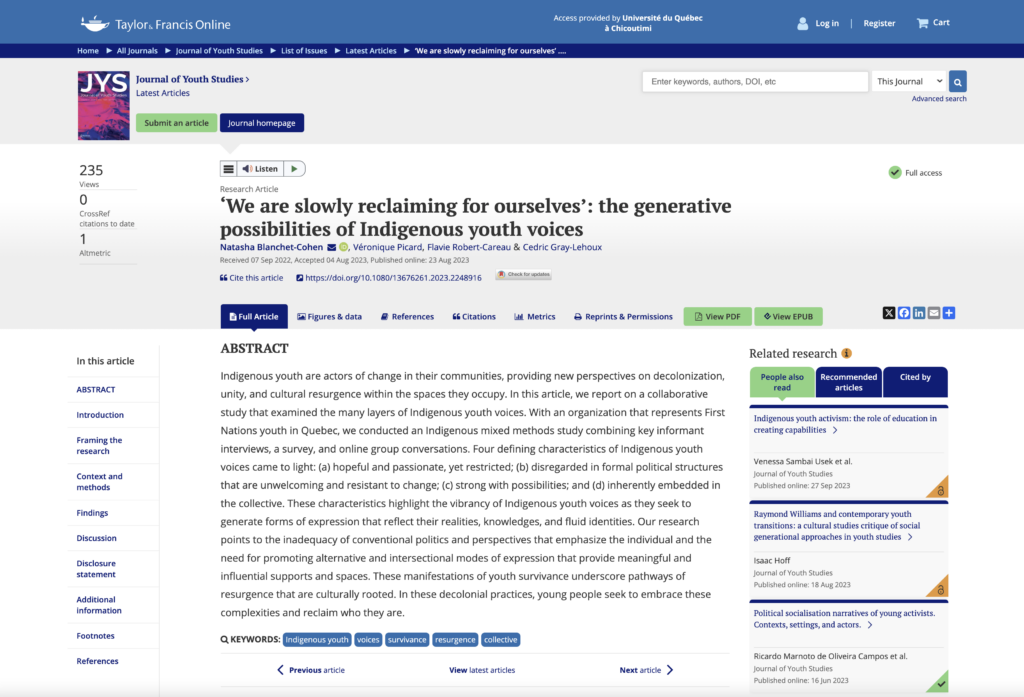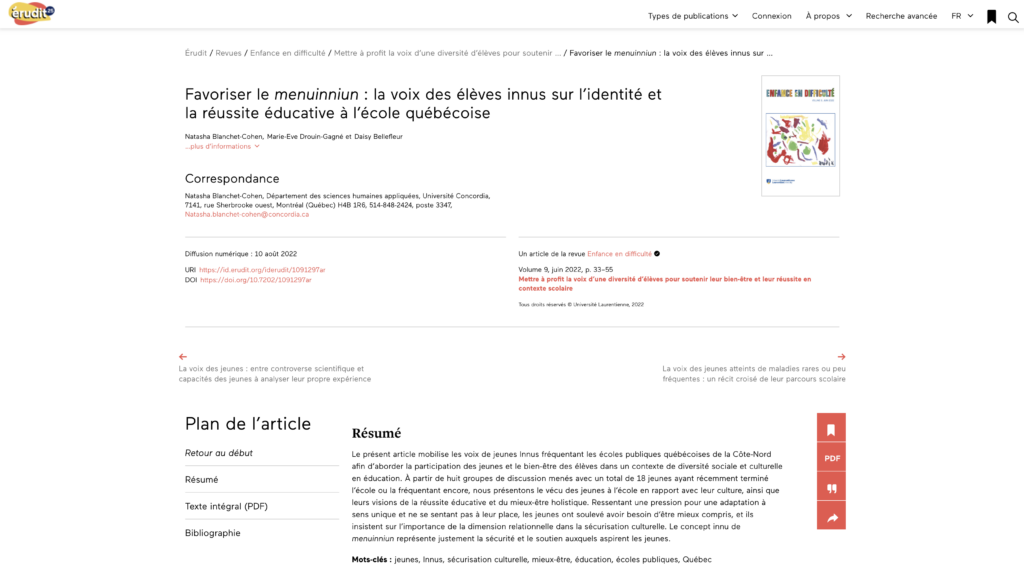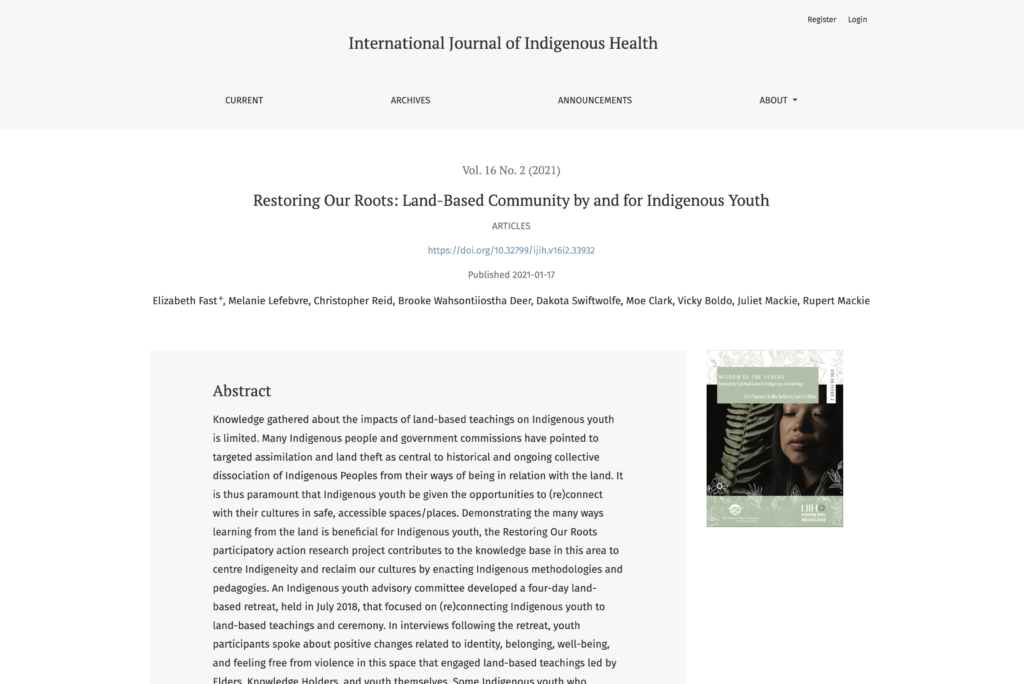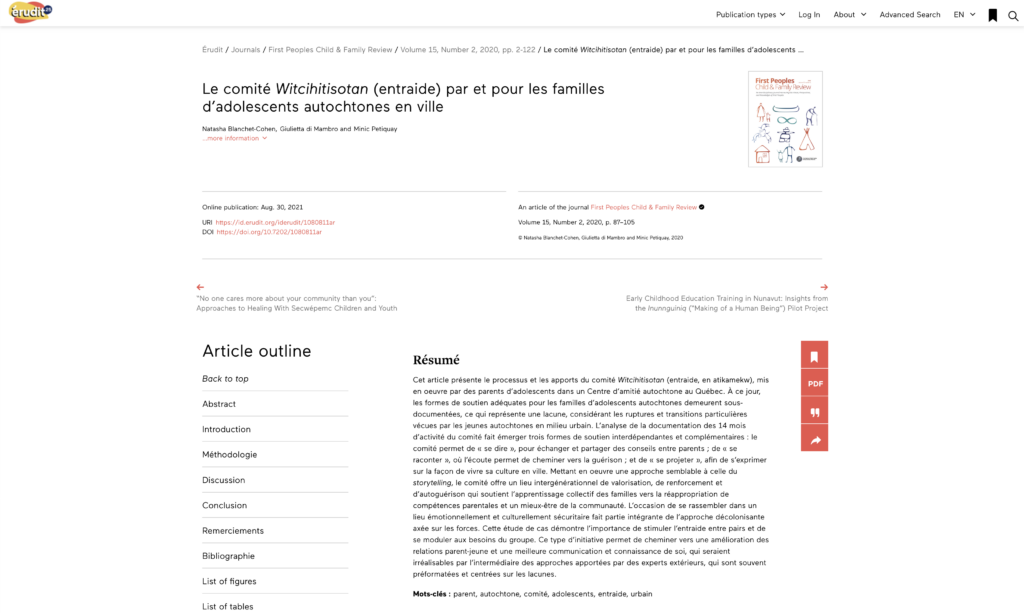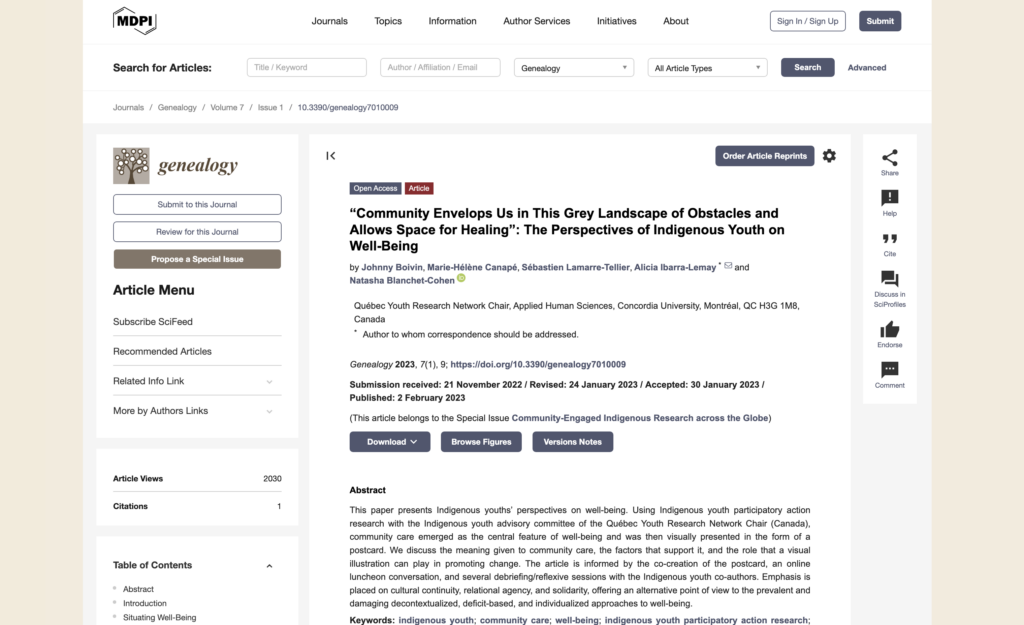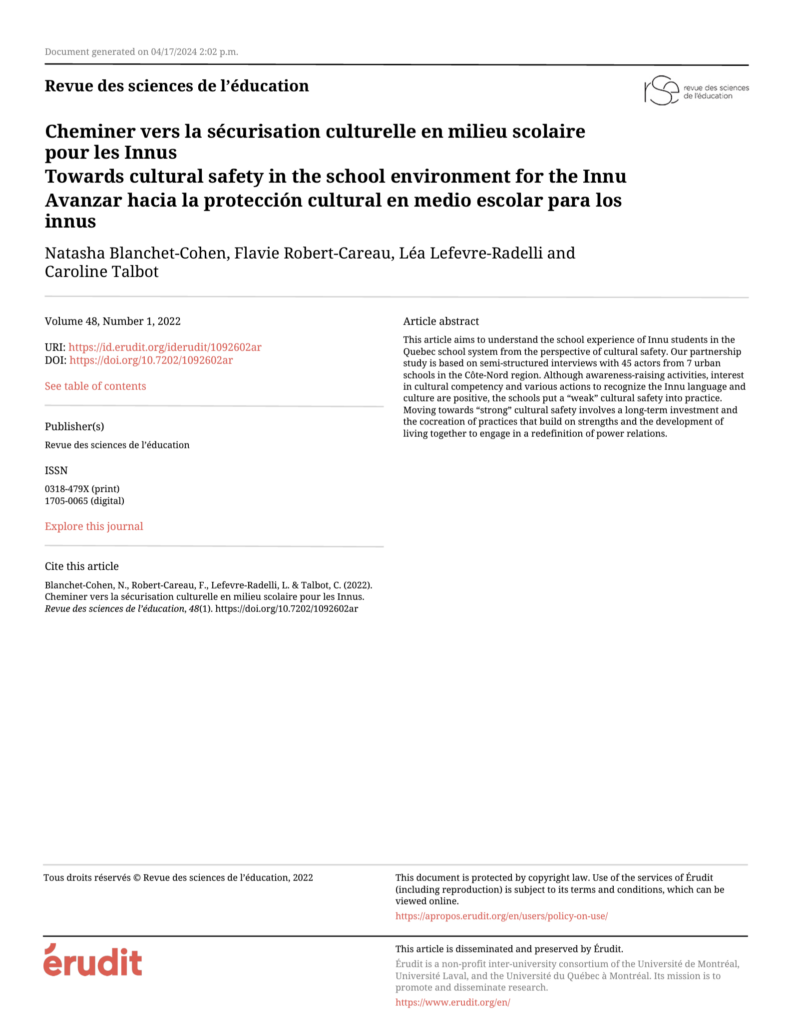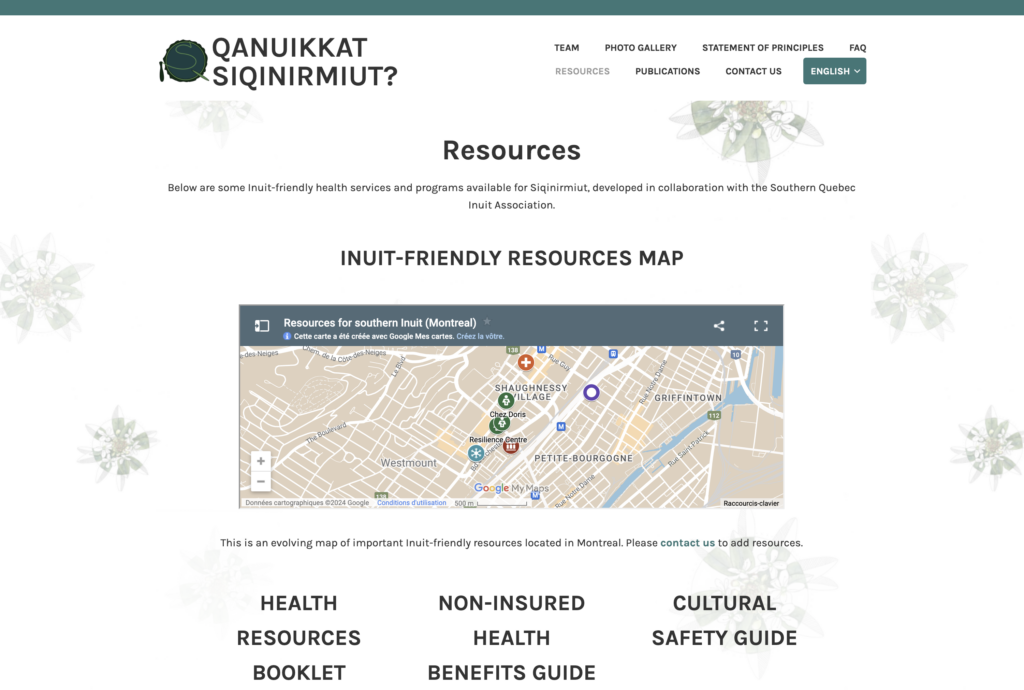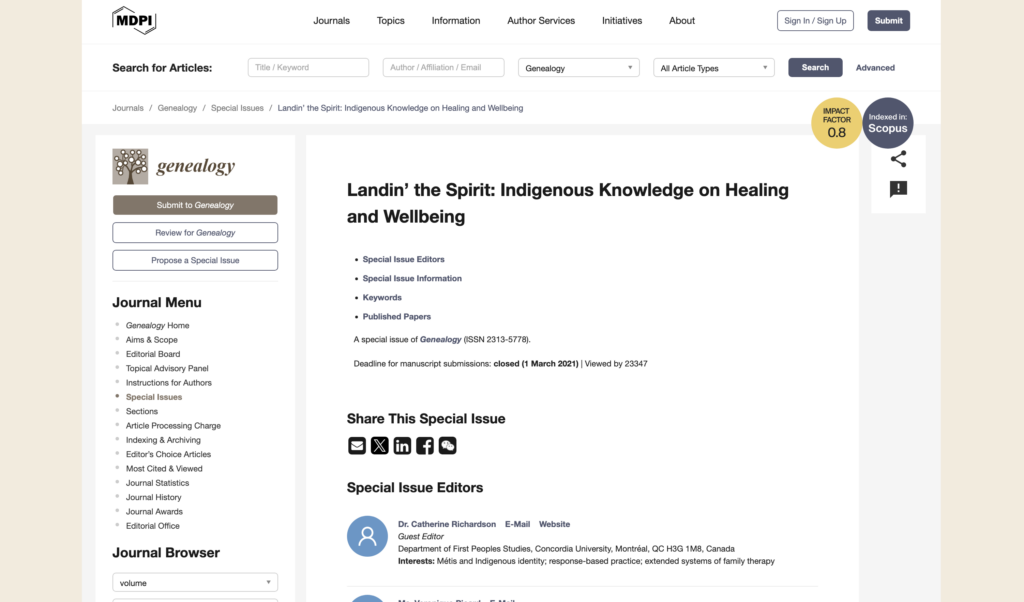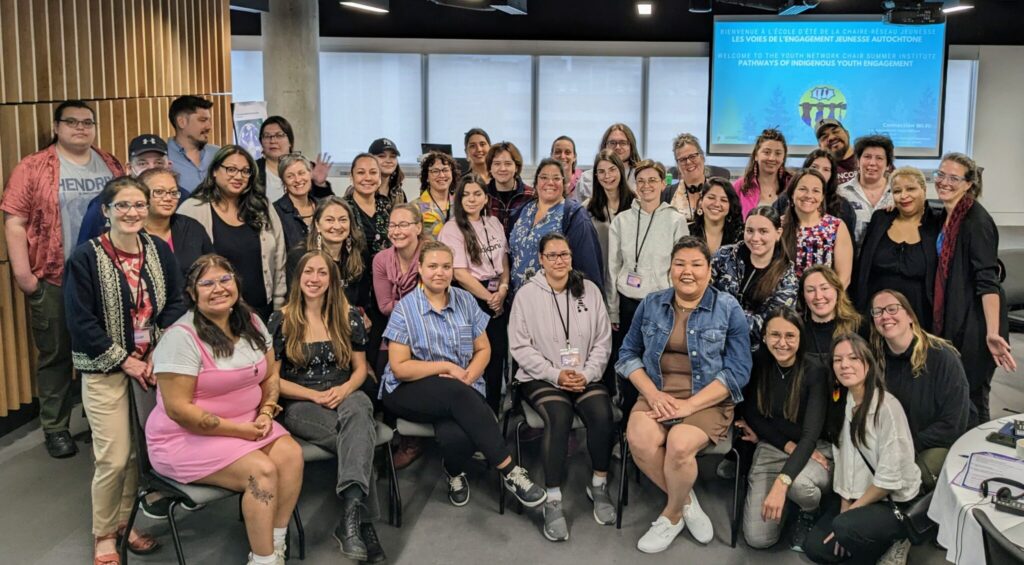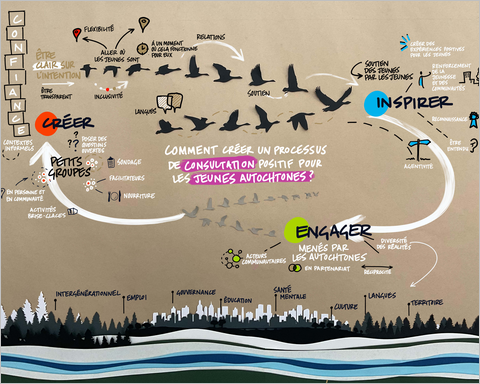Notice bibliographique
Fraser, S., Vachon, M., Hassan, G. et Parent, V. (2016). Communicating power and resistance: exploring interactions between aboriginal youth and non-aboriginal staff members in a residential child welfare facility. Qualitative research in psychology, 13(1), 67-91.
Résumé
Aboriginal youth are highly overrepresented within the child welfare system. High-risk youth are often placed in out-of-community residential placements. Such residential placements have been described by some as a continuation of colonial practices. Using communication theory as a conceptual model, we propose a qualitative analysis of micro-interactions that take place between Aboriginal youth and non-Aboriginal workers during the management of high-risk behaviors within a residential program. Three broad categories of interaction emerge from the data: complementary, symmetrical/complementary (where youth show a form of submission despite resistance), and symmetrical (characterized by a power struggle). Despite the diversity of interactions along this symmetrical to complementary continuum, interventions always start and finish in the same fashion. Moreover, the nature of interactions depended mostly on how quickly youth accepted the consequences of their behaviors. We also extracted five categories related to culture, race or context that are perceived as influencing the interactions that take place between staff and youth. The analysis of micro-interactions within clinical, organizational, social and historical contexts points to mechanisms by which asymmetrical power relations may be replicated on a day-to-day basis despite the best intentions of residential workers.
Hyperlien
https://doi.org/10.1080/14780887.2015.1106629Publication du membre
Sarah FraserAppartenance aux volets










